Six Long Distance North East Walks Inspired by Ancient Pilgrimages
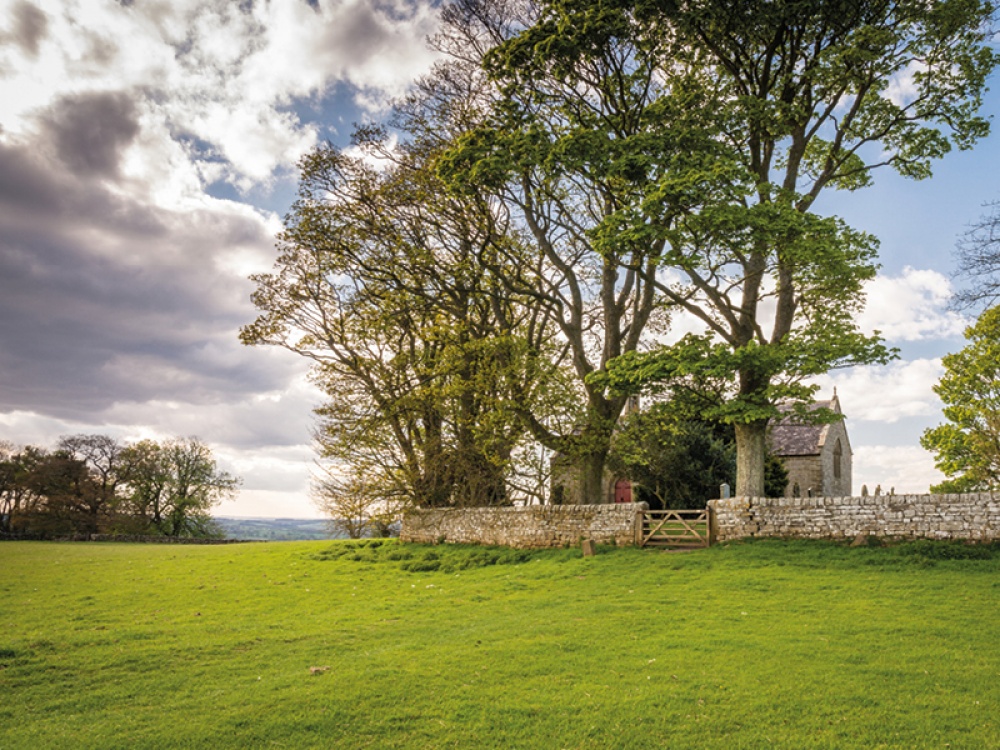
The Northern Saints Trails are a new network of six long-distance walks which, inspired by ancient pilgrimage routes, criss-cross the North East
The Angel’s Way passes the Angel of the North; the Way of The Sea, the only walk not to finish in Durham, links Warkworth to North Shields; and the Way of Light stretches from the haunting Heavenfield battle site, and runs through the market town of Hexham, the pretty village of Blanchland and across the moors ending at St Cuthbert’s shrine in Durham Cathedral.
Want a more urban route? The Way of Learning follows the trail of England’s original scholar the Venerable Bede, starting at his monastery near Jarrow and taking you through a rich legacy of industry and inventiveness, via South Shield’s Arbeia Roman Fort to Sunderland and then on past Penshaw Monument and the medieval Finchdale Priory towards Durham.
Read More: Our Guide to the Yorkshire Town of Otley
The final two routes are the Way of Life, which starts at the ancient spa village of Gainford, and leads you via Escomb Saxon Church and past Auckland Castle where the Prince Bishops once lived; and the Way of Love which begins beside the sea in Hartlepool and heads inland past Trimdon and the Cassop Vale Nature Reserve on your way to the UNESCO World Heritage Site that is Durham Cathedral. It follows the influence of three of the most important female figures in the establishment of Christianity in England, St Hilda, St Helena and St Mary Magdalene, mixing maritime and mining heritage with iconic countryside, over a distance of 28 miles.
Each trail is of historic and spiritual importance and yet they all vary in so many ways, and not just in terms of the terrain they pass through and their length. The 45-mile Way of Light is perhaps the most picturesque, passing as it does through the north east corner of the North Pennines Area of Outstanding Natural Beauty. It transports you from the dawn of Christianity through battles of the Dark Ages which impacted the whole region’s faith, via abbeys that matched Rome for majesty and a seminary where England’s leading ecclesiastics were taught. It’s a larger-than-life low down on an eventful part of Northumbria’s history, and with breathtaking views along the way it’s well worth following at least some of this often remote route.
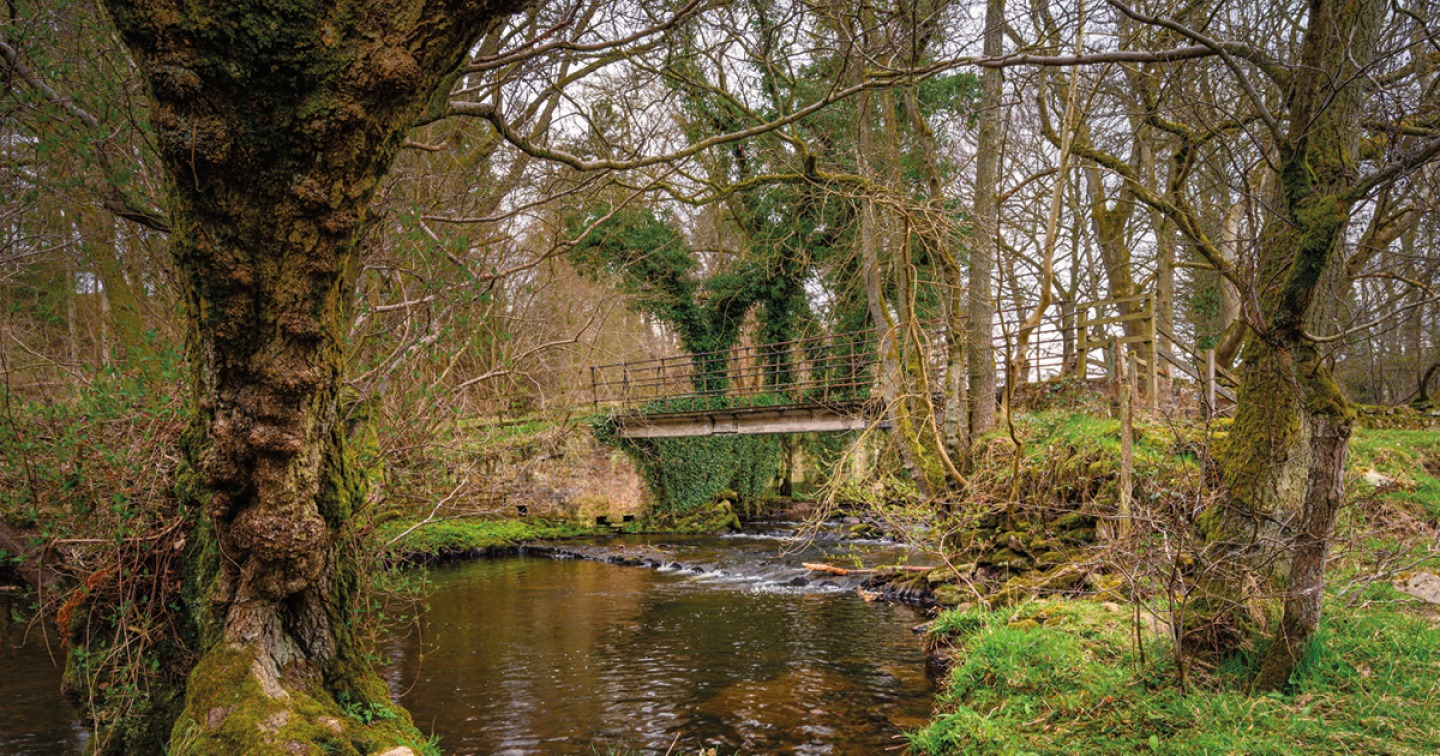
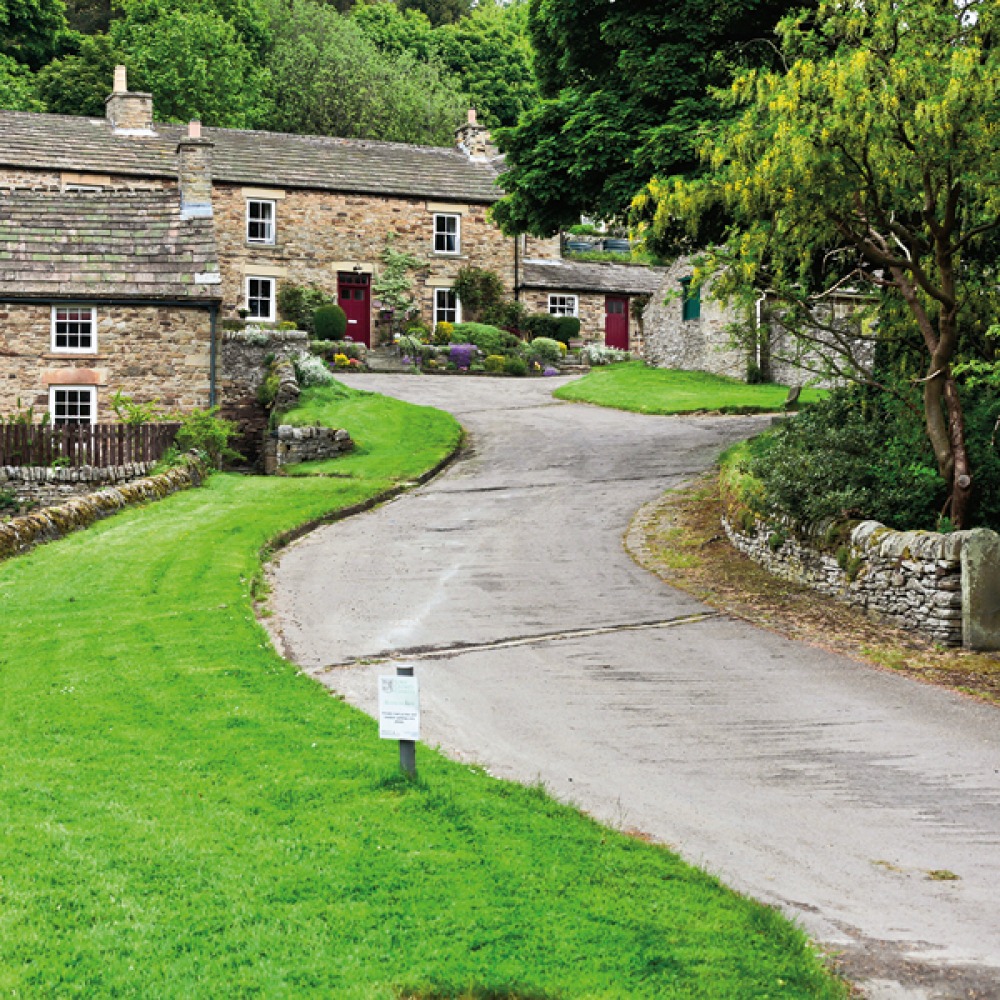
The trail starts at Heavenfield, six miles north of Hexham, and the site of a battle victory for the pious future king and saint, Oswald, which reunited Northumbria. As you approach the tiny but charming hilltop church of St Oswald’s your eyes will inevitably be drawn to the vast landscape that seems to stretch for eternity here, and, religious or not, you can’t fail to be moved by the rather strange stillness that surrounds this remote spot just north of Hadrian’s Wall.
As you head down into the Tyne Valley, make time to explore the unusual Church of St John Lee as you pass through the village of Acomb. Unusual as it boasts both a tower and a steeple, and it’s also home to the Oakwood Stone, a cup-and-ring marking from 1600 BC. Once into the busy market town of Hexham you’ll find plenty of independent shops and eateries and it’s worth making a pit stop in one of the many cafés before you explore the abbey. Initially built using stone salvaged from nearby Roman sites, the abbey was ransacked by Vikings and rebuilt as an Augustine priory in the late 12th century. There’s an Anglo-Saxon crypt, the Frith Stool (a stone seat probably made for Saint Wilfred in AD 674) and the night stair, a glimpse as far back in time as the 13th century when canons who lived in the abbey would descend these very steps from their dormitory to service in the choir. It’s tempting to linger here, and there is much to see, but there’s also much further to go on the Way of Light.
Read More: Five Brilliant Beachside Breakaways
Heading south the trail takes you through open fields, fern-filled woods and even follows the rushing Devil’s Water, a tributary of the river Tyne, for a few miles. You are following in historic footsteps here as it’s the site of the Battle of Hexham which took place in 1464 during the War of the Roses, and where the ruined home of James Radcliffe, 3rd Earl of Derwentwater, a Jacobite rebel executed for treason in the Tower in 1716, still stands silently keeping watch beside the water.
As you continue up the valley, through the dense, whispering conifers of Slaley Forest, you emerge onto Blanchland Moor with its wide-open vistas. It’s stunning scenery up here (although you are never higher than 400 metres above sea level, it seems much higher). Skirting round Derwent Reservoir you’ll come into the pretty 18th century village of Blanchland, and the Lord Crewe Arms is where you should rest and recuperate overnight before continuing your journey (check out the priest’s hidey-hole in the huge fireplace here). One of the original conservation villages in England, Blanchland was built with stone from the ruined Blanchland Abbey and you may well recognise the picture-perfect village square from its many appearances in period dramas.
From Blanchland the trail turns south-eastwards, via the villages of Edmundbyers and Muggleswick. The area around Muggleswick is a Site of Special Scientific Interest with dual attractions; a steeply sided river gorge and large sessile oak woods, now sadly scarce in England.
Read More: Top Restaurants, Pubs and Cafés in Hexham, Northumberland
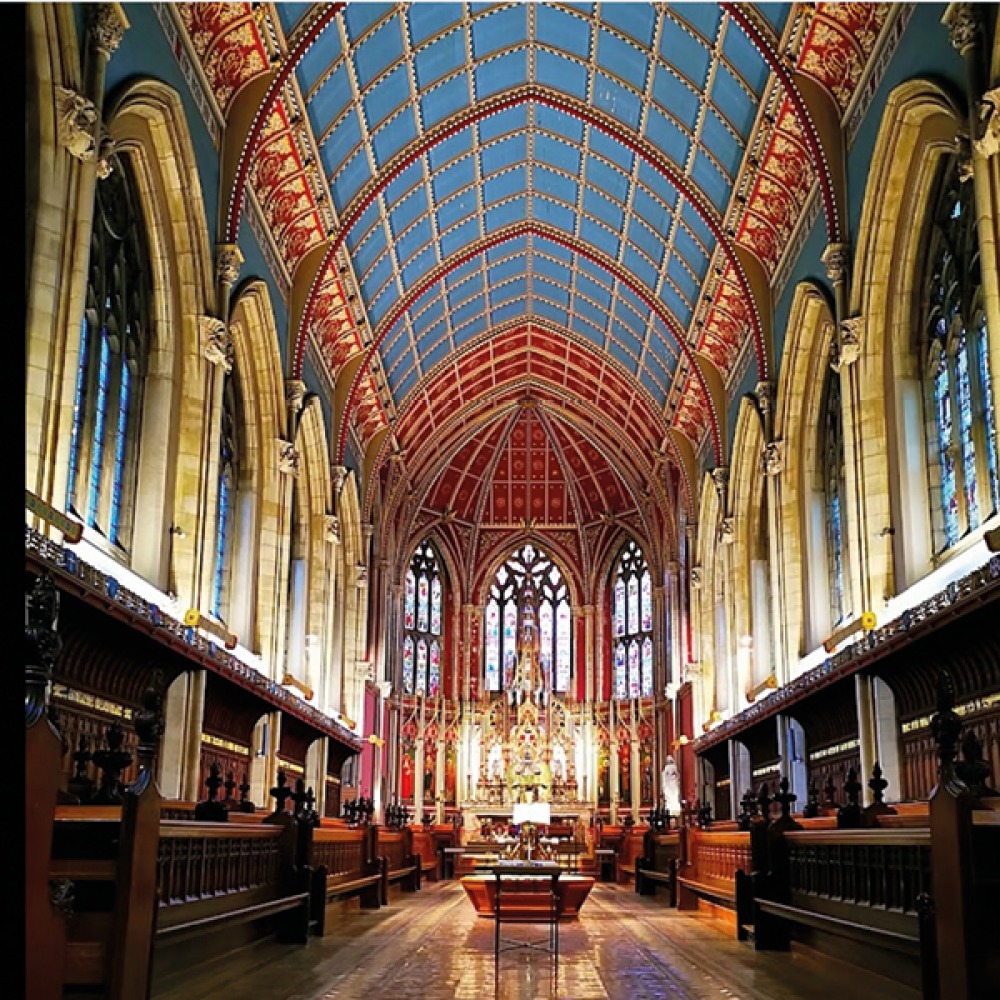
Then it’s on to Lanchester and time for a coffee in one of the village’s cafés before you carry onwards through Dora’s Wood, named after one of the 19th century’s greatest and most mysterious local literary lights, Dora Greenwell.
Durham is within your sights (well, it’s still about eight miles away) but before you reach the breathtaking medieval cathedral, and just before the historic Ushaw College, between Heugh and Esh, you will catch your first glimpse of the majestic cathedral in the distance. A field here is referred to as Salutation Field in honour of that fact – it’s where pilgrims would stop to give thanks for (almost) arriving at their final destination.
But you still have Ushaw College to explore. This seminary, where you’ll find hugely important religious artefacts, is the pre-eminent example of Gothic revival in the region and a glowing testimony the the past power of the Catholic faith. In its heyday it was one of Britain’s biggest seminaries and its influence spread far and wide. Its history dates back to the 1790s and a group of students from an illustrious seminary in Douai, France who fled their home during the French Revolution and, looking to to set up a new centre for priestly training, landed on Ushaw. Its fame soon grew and students flocked to the college which resulted in its large scale expansion in the 1840s, and a long-running association with some well-known architects including the then-star of Gothic-revival design Augustus Welby Pugin, whose Chapel of St Michael still exists today. Ushaw, through its growing importance, acquired many treasures, including rather remarkably St Cuthbert’s ring, left behind by a wealthy 13th century pilgrim.
Read More: Ask a Local: Where to Go in Barnsley
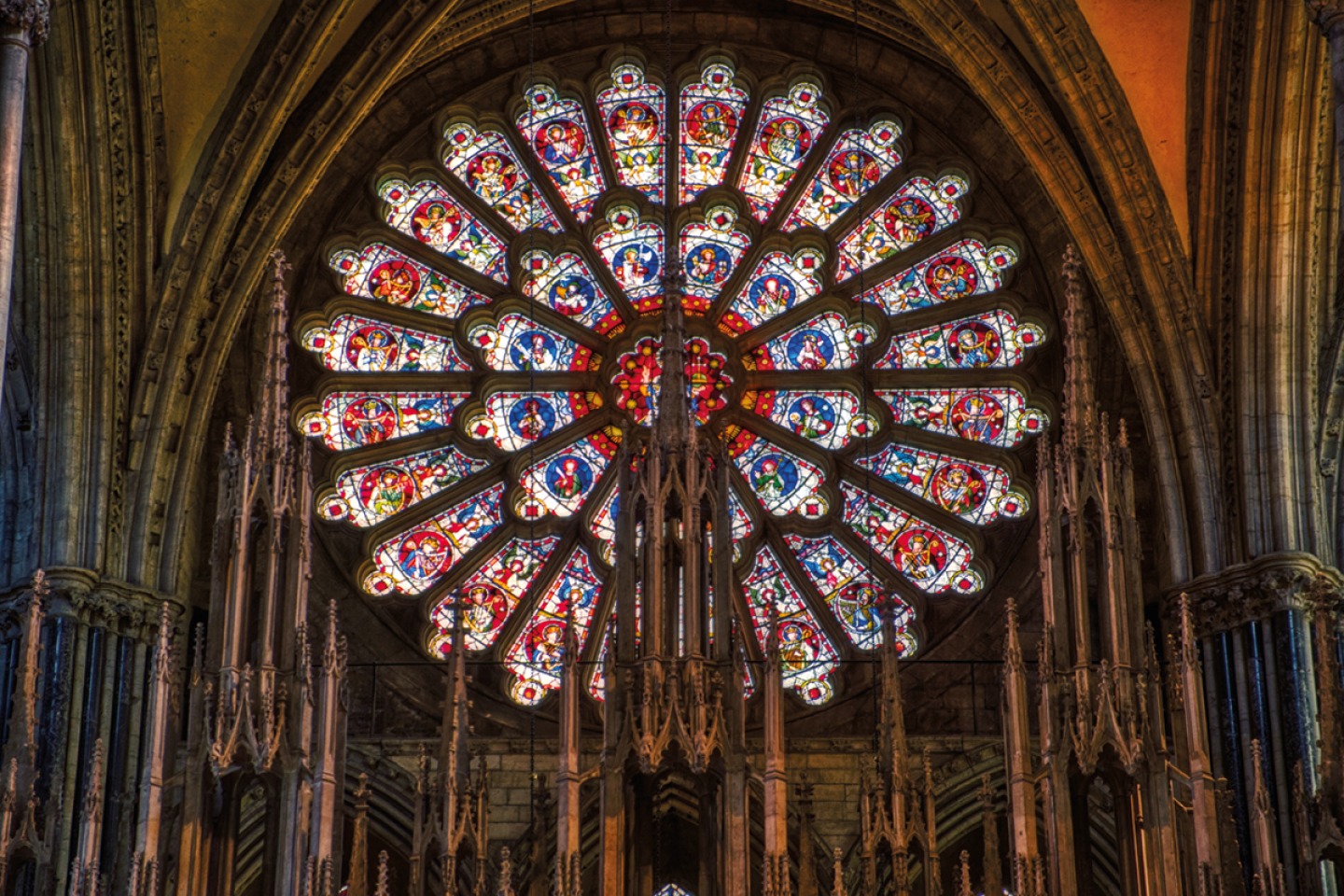
Durham’s UNESCO World Heritage site need little introduction but it certainly is a fitting end to the trail. You’ll enter the city from the west, over the 15th century stone Framwellgate Bridge and come across the busy Market Place before turning right up the cobbled street, where the stronghold of Durham’s 11th century castle sits opposite the magnificent cathedral. The castle was the seat of the mighty Prince Bishops of Durham, at one time second only in power to whichever monarch was on the throne of England and, although it’s now part of Durham University, guided tours take place daily.
And so to the Way of Light’s final destination, one of Britain’s best-preserved and most dazzling examples of Norman architecture. The obvious place to begin your exploration of this awe-inspiring space is at St Cuthbert’s shine, the man who motivated the original building and who became a beacon for pilgrims from the world over. St Bede is also here – his bones were brought here in 1022 and now lie in the cathedral’s Galilee Chapel. Other treasures include the spectacular Rose Window, the most complete medieval monastic library and archives which survived the Reformation, the peaceful cloisters and of course the unbeatable panoramic views from the top of the cathedral’s tower. It might seem like 325 steps too far at the end of the long trail but we promise you, the views are worth it.
For full details on the alternative trails head to northernsaints.com
The Beaumont, Hexham
A Victorian townhouse opposite Hexham’s stunning 6th century abbey, this is the go-to on the start of your journey. Dine on local, seasonal produce in the popular restaurant, or enjoy a relaxing drink in the bar before heading up to one of the large ensuite bedrooms.
The Derwent Arms, Edmundbyers
With traditional menus focusing on seasonal and local produce, and plenty of local ales available in the cosy bar, this village pub is dog friendly and has six cosy bedrooms available, all with their own ensuite, and a separate apartment sleeping up to six guests.
The Lord Crewe Arms, Blanchland
In the honey-stone village of Blanchland, the 21 stylish bedrooms and suites at this historic inn are just what you’ll want after hiking through the surrounding hills. Sink into a hot bath in your ensuite before heading to the Bishop’s Dining Room, snuggle up beside the fire in The Hilyard for some award-winning dishes, or head to The Crypt, a medieval vaulted bar where you’ll fine real ales and plenty of ‘bar bait’.
Burnhopeside Hall, Lanchester
Once the home of engineer William Hedley, this Grade II-listed hall is now a welcoming B&B. Surrounded by 18 acres of gardens and woodland, there are four large ensuite bedrooms and breakfast is served in the homely dining room using produce from the hall’s own garden and surrounding estate.
The Victoria Inn, Durham
Just what you need after days of walking; a traditional award-winning pub close to the cathedral, with three cosy bar rooms, open fires, great beers on tap and home-cooked breakfasts.







